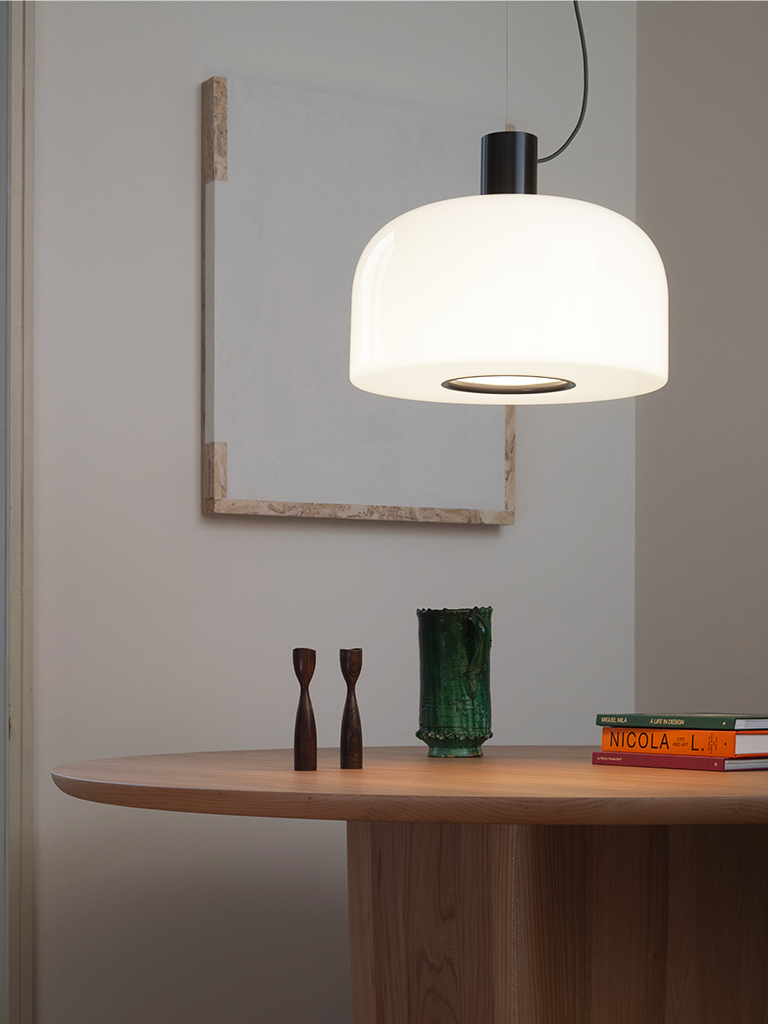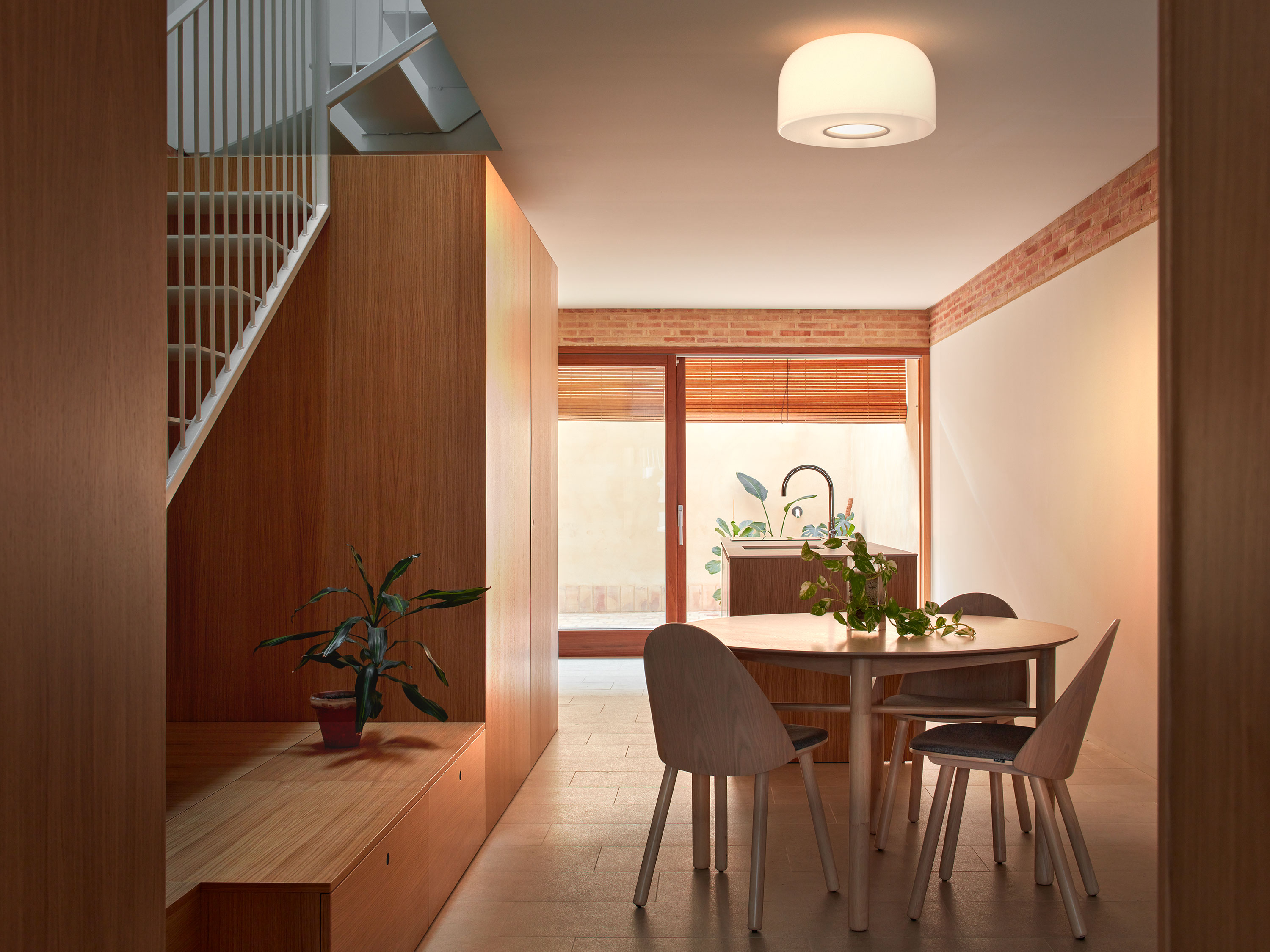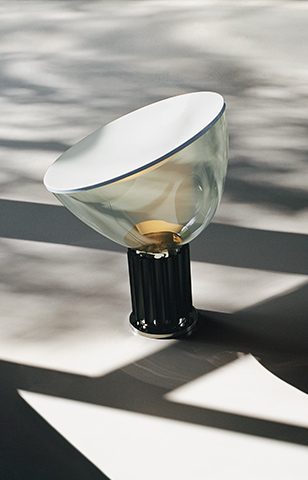Interview by Rosa Bertoli
Photography by Mattia Parodi
One of E. Barber & J. Osgerby’s most iconic designs for Flos, Bellhop has grown from a compact, colourful portable lamp to a full range of illumination possibilities encompassing a floor lamp, a wall uplighter and an outdoor bollard. In its latest iteration, Bellhop Glass explores the legendary design in a new material, opening it up to broader aesthetic and technical possibilities with table, suspension and ceiling models. Here, its creators Edward Barber and Jay Osgerby tell us about their design’s journey.
“When Bellhop launched, it was that really brilliant thing that happens when the technology is right, and just at the right moment, to be able to change a way of using something, so it became the new candle. That meant you could walk around the house, or take it outside, and bring the atmosphere with you as you go.”
- Jay Osgerby
“Bellhop has become part of the family for us. It’s in every home I visit, from every friend to a studio to my home. And we wondered how we could grow that family and take the bellhop which is quite a young spirited lamp and turn it into something more grown up.”
- Edward Barber
How did you approach the evolution of the design, from small portable lamp to large-scale ceiling and table lamp?
EB: Bellhop was actually designed for the Design Museum restaurant, it was conceived to bounce light from the surface. Bellhop Glass is really an evolution. Not only because it has grown up in scale, but also in materials: glass and metal instead of plastic, which allows the whole product to glow as the lights does not reflect off the surface as in the previous models.
JO: We were able to develop Bellhop into a collection because the archetype of it is familiar, people were already drawn to it. The thing about Bellhop is that it’s quite playful and its use of colour has made it very accessible. And now we’re doing something that has a very reduced colour range but in these more sophisticated materials. We changed the way that it works from something that’s personal, that creates space just around you, to something that creates an atmosphere, that is more architectural.

Defined by a triplex opaline glass diffuser developed in collaboration with the Flos R&D Department, the lamp is available as a table version with an aluminium base available in Bright Aluminium, Cioko and White, and in three sizes as a suspension lamp.
Where did the idea of glass come from, and how did the material inform what you did with the design?
EB: We wanted to relate to the existing collection. So we used pretty much an identical form, which we tweaked only slightly. The credenza version for instance is the same thing, blown up. For the pendant, we added a hole at the bottom to get a nice ambient glow and light coverage onto a surface. We spent ages working out what size that hole should be, so that you get the maximum amount of light, but without seeing the bulb.
JO: The idea came from the uplighter, which has a glass diffuser on it too, as it’s just universally lovely when you have light diffuse through white glass; it’s fantastic. It is a really nice way of just changing the frequency of the light so it becomes more appealing to be around. It’s triplex opaline, meaning it’s three layers that are blown together at the same time. You’ve got clear glass on the outside, then a white layer and then a thin layer of clear glass again, and the thicknesses are different for each layer. It’s all mouth-blown and very labour intensive.
How did you integrate aluminium into the design?
JO:When we launched Bellhop originally, we actually had aluminium bases and spun aluminium tops: it’s a collection that’s constantly changing, but the material palette is more or less the same. We could have done this ceiling lamp in aluminium, but then it would have been a shade, not a lamp. And for us that’s very much the distinction: the whole thing is a lamp, not a shade.
How much were you able to test the design yourselves?
EB:The credenza one in particular, we have been developing it over the past five or six years. We tried many different models, and then in the end we just reduced it down to the most basic concept, because in the end it just made sense for this product. We are very much imagining the credenza lamp in a hotel room, the pendant lamp could go everywhere, from offices to restaurants. But for us it’s a light that works much better in a home, it creates its own little world of light around it. Because the goal of intelligent lighting design is just replicating the light of a candle in a space, no matter how big or small, going back to the fire and the original source.



























